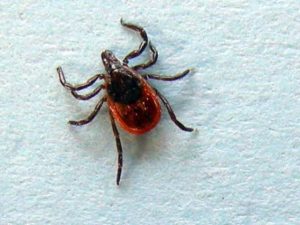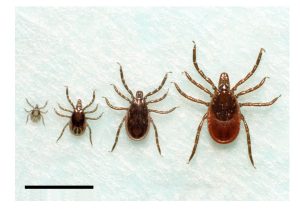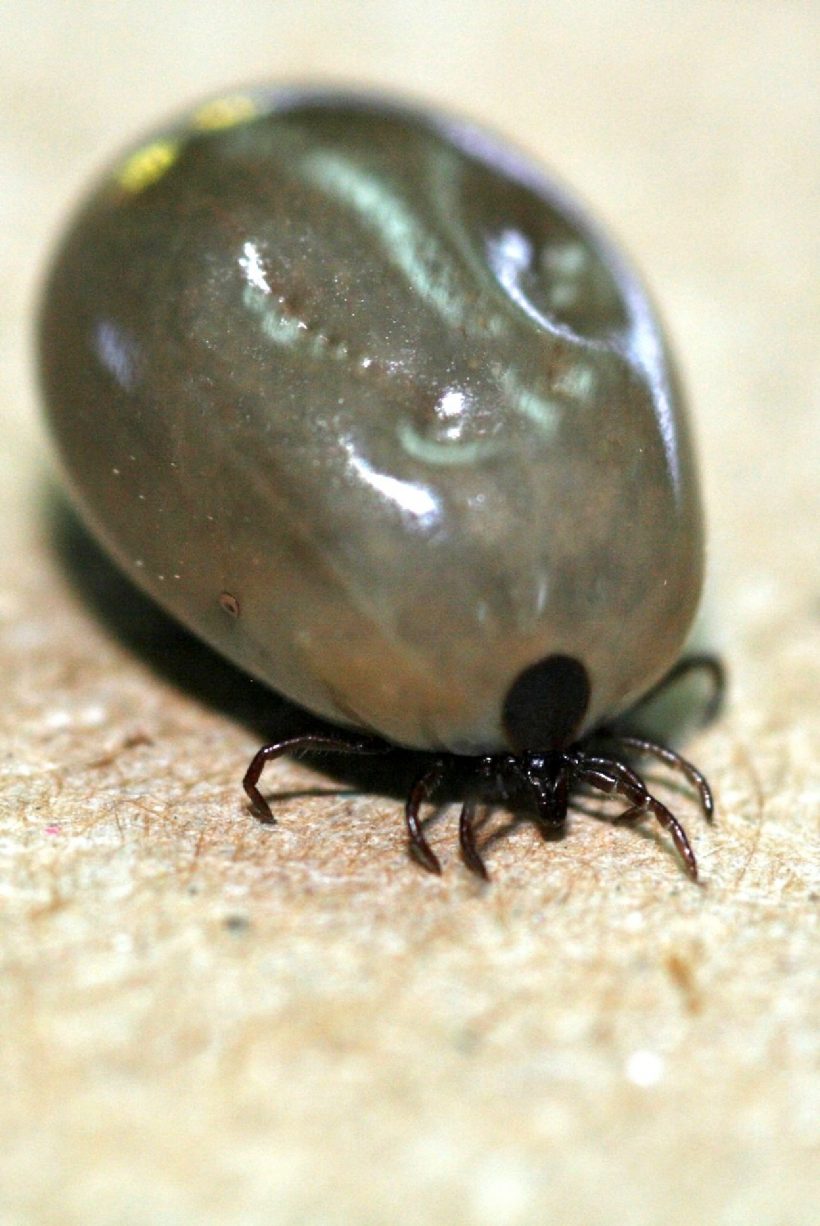LYME DISEASE
Lest you missed it, May was Lyme Awareness Month. I first wrote, years ago, that based upon available literature all was fine with Lyme. It was no big deal.
“Think again,” wrote Eleanor Cox who, as it turned out was far more knowledgeable and sadly experienced with Lyme than I. Eleanor had been to hell and back and I wrote about her trials and tribulations. Lyme is more than nasty. Lyme can kill. Gabe Magnotta, president of Niagara-based Magnotta winery, contracted Lyme disease in 2006. He died on December 30, 2009 at the age of 60. An outdoorsman, Magnotta was bitten by a tick during an outing. “The disease devastated our family and has been the single most horrific struggle we have ever faced,” said his wife Rossana. “Most people know very little about Lyme disease or how serious, chronic, debilitating and fatal it can be. Lyme sufferers are an isolated community of their own. We have to stick together because of the lack of understanding, testing and support for this disease in Canada.”
THE DISEASE
Lyme Disease (Ld) is a bacterial infection transmitted by ticks causing symptoms ranging from a relatively benign skin rash to severe arthritic, cardiac, neurological developments and, of course, death.

THE MAIN PLAYERS
Ld is caused by a spiral, cork screw shaped spirochete (spy-ro-keet) bacterium called Borrelia burgdorferi (Bb).
Spider-like creatures called ticks, some the size of a pin head, transmit the disease. An infected feeding tick regurgitates spirochete-laden fluids into the host and Bb migrates throughout the body.
Specifically, the main vector villain in Ontario is the blacklegged tick, Ixodes scapularis (I.S.) initially studied in 1972, at Long Point, on the north shore of Lake Erie. These ticks have since travelled through the province, as far north as the 50th parallel and throughout the body of Canada.
It appears that the great mime disease – Lyme disease – has been around for quite some time. A 5,300 year-old ice mummy referred to as Otzi, discovered 20 years ago, says so. Researching the Iceman’s genome – his complete genetic blueprint – turned up the Lyme disease bacterium Borrelia burgdorferi (Bb), according to Albert Zink, head of the European Institute for Mummies and the Iceman at the European Academy of Bozen/Bolzano (EURAC) in Italy.
“Our data point to the earliest documented case of Bb infection in mankind,” Zink and colleagues wrote in the February 28, 2012 journal Nature Communications. As readers now know Bb is spread by ticks and can cause a rash (the bull’s eye), flu like symptoms, joint, heart and nervous system problems. It mimics many illnesses making it tough to properly diagnose. Transmitted throughout Eurasia and North America, Lyme disease was first discovered in Connecticut in the mid-70s.
(As an aside, it appears the Iceman died violently. A flint arrowhead shot into his left shoulder seems to have killed him.)
Lyme disease specialist Dr. Ernie Murakami contends that the medical profession is divided between physicians who believe in Lyme disease and treatment and those who don’t believe there is a problem. Murakami opened a Lyme disease clinic in 1991 in B.C. In 2008 he resigned his licence to practice medicine due to “stress and harassment” from the profession and the B.C. College of Physicians and Surgeons. His present mission is to consult, educate and refer people to physicians prepared to properly diagnose and treat Lyme disease. The good news is that with quick, proper treatment there can be recovery. However, clinical and long-term antibiotic therapy isn’t normally prescribed in Canada and going to the U.S. can be costly.
Ticks and other insects carrying Bb contracted from infected rodents, birds, and deer spread it by feeding upon blood – including human. That “bulls-eye” rash is the spirochete forming beneath the skin. But that doesn’t always appear.
The infection responds to antibiotics but if it is misdiagnosed (due to the mime) or improperly treated in the early stages, Lyme disease can become a chronic (constantly vexing and reinfecting) illness. Dr. Murakami explained that the spirochete shows syphilis like characteristics as it matures, multiplies and spreads throughout internal organs.
TICK REMOVAL
Don’t apply heat (cigarette for example) or tug. You may force the tick to disgorge the bacteria into the wound or from the mandible left imbedded in your skin. Improperly used wide tweezers can also disgorge bacteria. You may want to get yourself a pair of very fine pointed tweezers to avoid squeezing the tick. “Grasp the tick mouthpiece close to the skin; pull straight out; do not twist. Wash with soap and water.” (Lyme publication).
MIME
In the early stages Lyme disease is characterized by flu like symptoms, aches, joint pain, fever and chills. Later stages include the flu-like symptoms, and more serious conditions develop: depression, cognitive and motor dysfunction, neurological disorders, paralysis, severe headaches, chest pain, tremors and possible death. Murakami contends Lyme disease is often misdiagnosed for a variety of conditions including chronic fatigue and fibromyalgia to muscular dystrophy. He finds it interesting that “Canadian tests suggest there’s nothing to worry about yet the same area has the highest numbers of multiple sclerosis in the world and the lowest numbers of Lyme disease.”
In 2010 the Leeds, Grenville and Lanark District Health Unit collected 382 ticks with 32 (8%) testing positive to Bb. Health Unit Manager Joan Mays suggested that Lyme awareness appears to be behind the increase in tick submissions as people want to know if they have been exposed to the disease.
During the fall of 2011 the Leeds, Grenville and Lanark District Health Unit reported 568 tick submissions of which 14.5% proved positive for Bb, “the bacteria that causes Lyme disease.” (Mays) Most had been submitted after mid-October with the mild November weather “likely playing a role in a longer tick season.” (Mays)
On November 23, 2011, a student attending Julie Payette Public School in Whitby was bitten by a tick in a nearby field. The boy’s mother, who was volunteering at the school, noticed the bump on her son’s neck after recess. Having some history with her dog and ticks the mother wasted no time going to a doctor who removed the tick and sent it away for testing. It proved to be the blacklegged type that carries Lyme disease. The Durham District School Board responded by cutting the long grass surrounding the back field at the school, posting a notice on the school’s website, educating teachers at a staff meeting and promising to erect a fence.

According to the Journal of Applied Ecology, migrating birds carry ticks long distances which are then dispersed by local resident hosts such as mice, voles, deer… According to model projections, the range of expansion of the blacklegged tick (Ixodes scapularis or I.S.) which carries Bb, will be an estimated 46 km per year in the coming decade “with climate warming expected to increase the rate of spread.” A substantial increase in human Lyme disease risk in eastern Canada will rise from 18% in 2010 to 82% by 2020. By tracking I.S. over the past 20 years researchers have found that the range is rapidly expanding and is “likely to colonize the most densely populated areas of southern Canada in the coming decade.” The colonized area is projected to increase “14 fold” from 23,000 km2 in 2010 to 317,000 km2 in 2020. “These projections suggest that prompt action is necessary to prepare the Canadian public for a likely epidemic of Lyme disease.” (Journal of Applied Ecology)
Hypotheses aside, veteran Lyme researcher John Scott, M.Sc., reports that he has data which suggests Bb already exits in cities such as Toronto and Montreal. “Our bird-tick study reveals that 36% of blacklegged tick larvae and nymphs, which are derived from songbirds in eastern and central Canada, are infected with the Lyme disease spirochete, B. burgdorferi. People do not have to go to an endemic area to contract Lyme disease.” (Scott).

HOW TO AVOID TICKS
Ticks prefer humid, wooded areas. Cut your grass. Remove brush and leaves from the edges of your property especially if your yard is bordered by woods or tall grass fields. Clean areas around bird feeders to reduce the attraction to mice and voles that can carry ticks and are needed by ticks to complete their life cycle. Discourage deer as they can carry large numbers of ticks. Place children’s play structures away from wooded areas. Avoid tall grass as much as possible. Insect repellent with DEET is effective but read the instructions. In long grass wear a hat, light coloured clothing, long-sleeved shirts, long pants and tuck your pants into your socks. Following a field trip check for ticks – armpits, groin, scalp, back….Don’t forget to check Bowser.
I learned of Sawyer Duranon Permethrin insect repellent for clothing which apparently is effective for up to 6 weeks. I was told the Ontario Federation of Anglers & Hunters was going to sell it but upon investigation learned that it is only available to the military.
For more information, such as what to do to save a tick to test for Bb, E-mail the Lyme Disease Association of Ontario: lymeont@hotmail.com.
A NOTE
Cathy Haefling, Information Officer of the Lyme Disease Association of Ontario, wants to emphasize that Lyme disease can make you very sick and “there is no treatment in Canada if you are sick for longer than a month.” She said she gets most of her enquiries from people who had been bitten some time ago, are having symptoms and can’t get treatment. “On a regular basis I hear from the chronic Lyme patients who suffer physically, emotionally and financially. I have no answer except to say they have to go to the U.S. (for treatment).”
A FINAL NOTE
On May 2, 2012, Elizabeth May, Green Leader (Saanich-Gulf Islands) announced her intention to introduce a Private Member’s Bill calling for the development of a national strategy to address the challenges of the timely recognition, diagnosis and treatment of Lyme disease including funding for the provinces and territories to implement the strategy.
“Lyme disease can be devastating. Too many Canadians are now disabled, deprived of the joy of family and friends, of school or work, due to Lyme disease. The public and the medical community need to be educated as to the increasing incidence and range of this disease,” said May.
Photos – courtesy Lyme researcher John Scott.
